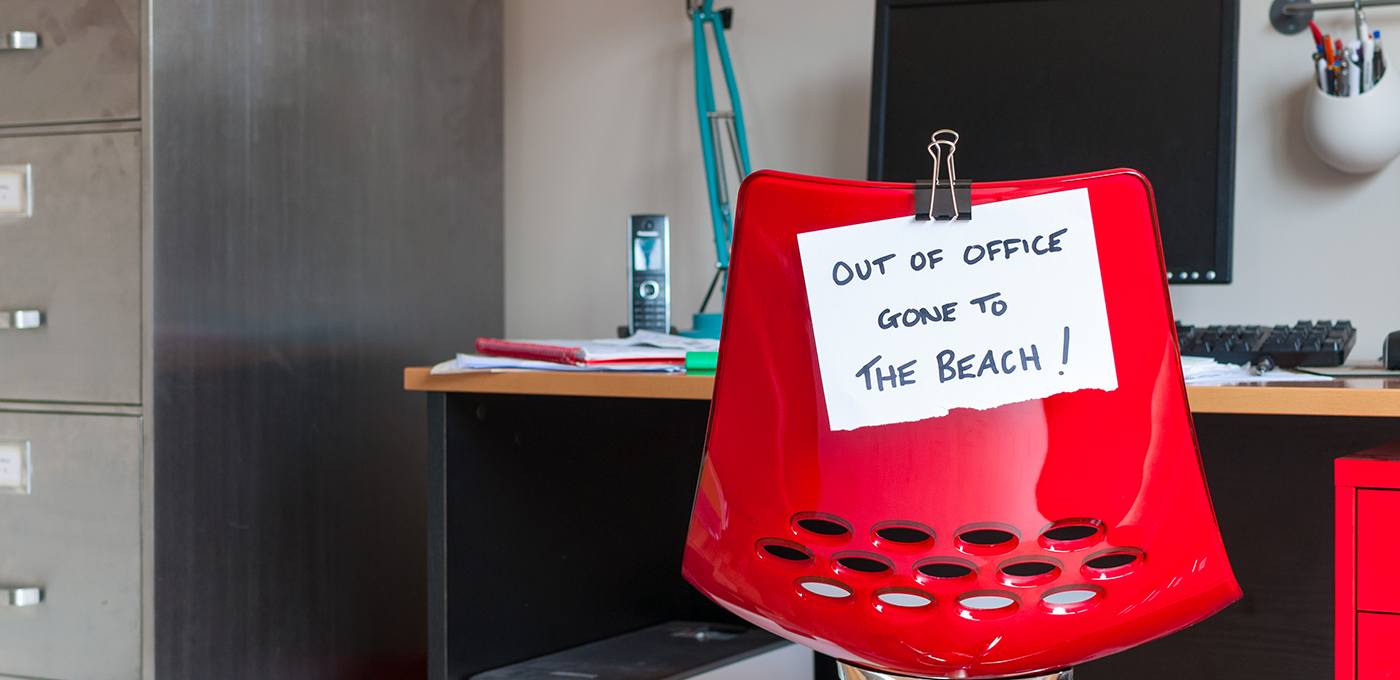
Why we Ban Employees from Email During Vacations
This article was contributed to INC Magazine by Brian Scudamore.
A company-wide "going dark" policy improves engagement, productivity, and profits.
We all know how important it is to get downtime over the holidays -- and how hard it is to find. Studies show that taking time off from work recharges our batteries, clears our minds and enables us to come back with extra focus. But in the age of email and social media, truly disconnecting from work - even when you're on the beach - can feel next to impossible.
I recently wrote about the benefits of CEOs "going dark" on holiday. Unplugging is something I've found incredibly valuable to my well-being and my business, but the reaction to the story surprised me. Some readers were critical, suggesting that "going dark" was a privilege reserved for people in the c-suite. Even internally, we got push back from employees who felt it was just lip-service - that they couldn't truly unplug without jeopardizing their jobs.
That really got me thinking. The intention wasn't to make "going dark" a policy for executives and upper management -- it was supposed to be practiced by everyone, so they could reap the benefits of getting offline. But I realized that how to make this happen isn't always obvious. How do you get buy-in from managers? How do you ensure key duties get covered? How do you "go dark" without worrying your inbox will explode upon return?
We consulted our People Department and hashed out a concrete plan to make sure everyone could really disconnect and recharge. We've implemented it across our company, and we think any business can pull it off -- for the benefit of their bottom line.
Here's how to do it over the holidays this year.
Help Employees Pull the Plug
With a little planning and communication, it's possible to give even seemingly indispensable staff the break they deserve. To this end, we created this nine-step system for going dark to help streamline the process and make sure nothing falls through the cracks.
It starts with booking vacation days at a time that makes sense for the whole team. Then, it's critical to designate the right person to cover for you, what we call a single point of accountability or "SPA." The next steps are to communicate with your team about what they need to know in your absence, while reviewing opportunities and roadblocks. The last stage in this process is one that's all-too-often overlooked: scheduling a dedicated catch-up time post-vacation to get back in the loop.
The essential element here is finding that single point of accountability - someone ready, willing and able to step into your shoes while you're away. Information and decision-making-power is all in one place, so the team can function smoothly and employee feels empowered to leave work life behind.
This is nothing revolutionary, of course. But all too often "covering" for someone on vacation is looked at as an extra burden. We've flipped that and turned it into an opportunity for junior staff to step up, get insight into new roles, and add to their own skill set.
"Go Dark" ...and See the Light
When it's done right, this whole process is amazingly beneficial. First and foremost, a genuine break from work (where you're really not checking email or answering calls), is fundamental to recharging body and mind. Getting quality time with friends and family can't be overvalued.
And it has real returns on the job. Research says that productivity flourishes after you take time off. In the thick of the work week, it's hard to break out of tunnel vision and actually get creative about the business. It's amazing how often we have people return from vacation with big-picture ideas for improving the company - which makes coordinating coverage for a few weeks a year worth it.
Another perk to this approach is that employees can test-drive new roles and responsibilities by filling in for different people. For example, we rolled out new sales software earlier this year - a huge process with plenty of unexpected challenges - and we did it while the project manager was on vacation. In the past, we would have dragged him away from his holiday to get the answers we needed via phone or email. In this case, his SPA dove into problem-solve - a great learning experience and a chance to flex new leadership muscles.
Really though, the biggest benefit of empowering your employees to go dark is that it offers a pulse check on leadership. If a manager has put the right people in place and has delegated properly, operations will continue to flow smoothly in their absence. When an employee simply "can't" take time off or a manager's department deteriorates while they're gone, it's a sign something is wrong. Changes need to be made to strengthen the team.
It's been several months since we rolled out our official nine-step plan for going dark, and I'm happy to say that across the entire company people are finding time to take vacation and truly unplug from work. It's a little counter-intuitive, but it's a fundamental truth: Sometimes the best way to be more productive on the job is to leave your job behind for a week or two, altogether.






